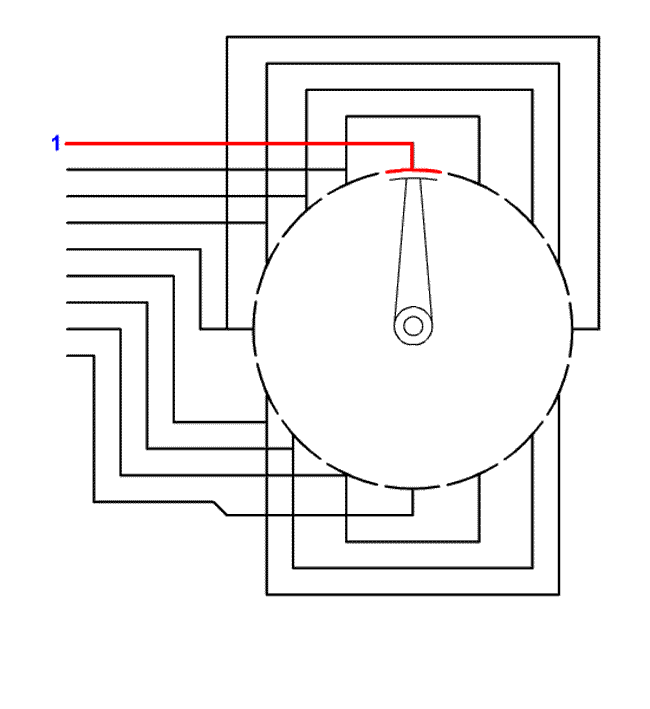The HAMMOND ORGAN
North Suburban HAMMOND ORGAN Service
If, on the other hand, we start at the far end of this device and successively pick up signals in reverse order (nine, eight, seven, six, etc.) we will encounter a series of signals which are successively advanced in phase. (Relative to the signal at the far end, each signal in reverse order is less retarded [more advanced] than the previous.) In this direction, the phase shift is leading, and this time the continuous phase change causes the apparent frequency of the signal to increase. It is exactly the same as when we approach a sound source and the Doppler effect makes us hear an apparent pitch which is higher than the actual pitch of the source.
To get the maximum amount of vibrato that Hanert felt would be good for best musical results, he had the signal appear across the entire delay line, but only used nine of the eighteen taps. (Some in the middle are skipped to create more phase shift between the taps which are accessed, and the first two are always used.) The signals from these taps are connected to each of the 16 sets of stationary plates in a 16 pole rotary capacitor which Hammond referred to as the vibrato scanner.
The pickup in the scanner rotates at 412 RPM which is the actual vibrato rate. It is 6.87 vibrato cycles per second and falls within the desirable vibrato range of six to seven cycles per second.
If, however, the musician wanted a less intense or more subtle vibrato, Hanert arranged an ingenious switching system which would change the connections between the 16 poles of the vibrato scanner and the actual taps on the vibrato line box, using smaller portions of the vibrato delay line which gave less total phase change for each half revolution of the scanner.
The Hammond scanner rotates unidirectionally, however to get a correct vibrato, it has to scan the vibrato line box taps both forward and then in reverse. By an ingenious wiring arrangement, Hanert accomplished this which we illustrate below via this "gif" animation. In it, you will see how the scanner pickup arm rotates and passes each of the 16 peripheral sets of stationary plates for each of the line box taps.

In order to make this easily understandable we have considerably slowed the rotation rate so that you can follow the events as the pickup arm rotates. Also, for each wire in the cable from the scanner to the vibrato line taps, we have arranged the animation to highlight in red the actual wires which the pickup arm passes at any moment, and at the other end by means of numbering, we show you how the continuous rotation of the scanner results in a backward and forward scan of the vibrato line for each half revolution of the scanner. Here is the animation showing the operation of a Hammond vibrato scanner and how it scans the vibrato line box in both directions to make the resulting pitch both decrease and increase by the same amount which thereby maintains the AVERAGE frequency the same as that of the input signal.
Previous page Page 10. Next page